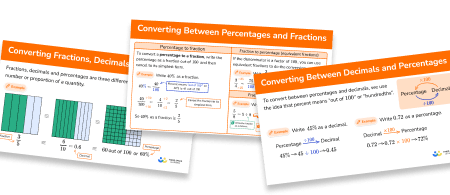FREE DOWNLOAD
Mixed Numbers To Improper Fractions Worksheet

Help your students prepare for their Maths GCSE with this free Mixed Numbers and Improper Fractions worksheet of 42 questions and answers
- Section 1 of the mixed numbers to improper fractions worksheet contains 36 skills based mixed numbers to improper fractions questions, in 3 groups to support differentiation
- Section 2 contains 3 applied mixed numbers to improper fractions questions with a mix of worded problems and deeper problem solving questions
- Section 3 contains 3 foundation and higher level GCSE exam style mixed numbers to improper fractions questions
- Answers and a mark scheme for all mixed numbers to improper fractions questions
- Follows variation theory with plenty of opportunities for students to work independently at their own level
- All questions created by fully qualified expert secondary maths teachers
- Suitable for GCSE maths revision for AQA, OCR and Edexcel exam boards
Unlock access to download your free resource
You can unsubscribe at any time (each email we send will contain an easy way to unsubscribe). To find out more about how we use your data, see our privacy policy.
Converting mixed numbers to improper fractions at a glance
A mixed number (sometimes called a mixed fraction) has both a whole number part and a proper fraction part. An improper fraction is one where the numerator is greater than the denominator ; they are informally known as top-heavy fractions.
A proper fraction is one where the numerator is smaller than the denominator.
A mixed number cannot be composed of an integer and an improper fraction (more than one whole), such as 6 and 8⁄5. This would have to be corrected to a mixed number – in this case, it would be 7 and 3/5.
In order to carry out fraction arithmetic it is useful to be able to convert a mixed number to an improper fraction, and an improper fraction to a mixed number.
To convert mixed numbers into improper fractions, we consider how many of the denominators we have in total. For example, for the number 1 whole and 3 fifths we know that a whole has 5 fifths, so in total we have 5 fifths added to 3 fifths which is 8 fifths. For the number 2 1/4 we know that two whole numbers have 8 quarters (fourths), so in total we have 8 quarters added to 1 quarter which is 9 quarters.
In order to convert an improper fraction to a mixed number we need to divide the numerator by the denominator. For example, to convert 11/5 from an improper fraction to a mixed number, we need to divide 11 by 5. 5 goes into 11 twice leaving a remainder of 1 fifth. So the improper fraction of 11/5 is equivalent to the mixed number 1 and 1 fifth.
Looking forward, students can then progress to additional number worksheets, for example a percentage worksheet or a rounding worksheet.

For more teaching and learning support on Number our GCSE maths lessons provide step by step support for all GCSE maths concepts.
Do you have GCSE students who need additional support?

There will be students in your class who require individual attention to help them achieve their target GCSE maths grade. In a class of 30, it’s not always easy to provide.
Help your students feel confident with exam-style questions and the strategies they’ll need to answer them correctly with personalised online one to one tutoring from Third Space Learning
Lessons are selected to provide support where each student needs it most, and specially-trained GCSE maths tutors adapt the pitch and pace of each lesson. This ensures a personalised revision programme that raises grades and boosts confidence.








